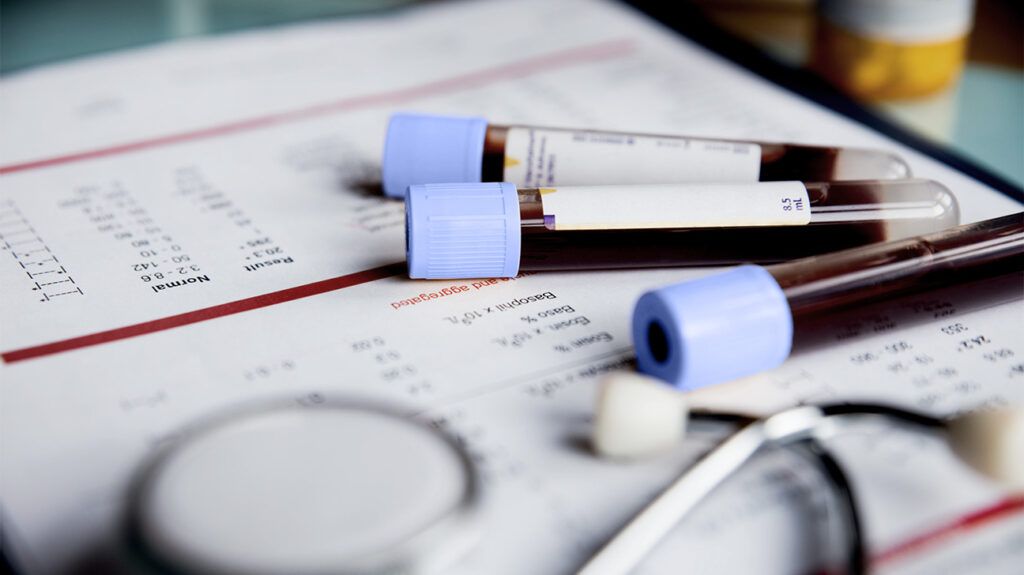A total iron binding capacity (TIBC) test is a type of blood test that measures the capacity of transferrin, a carrier protein, to bind with iron. The results can help diagnose certain health conditions.
A TIBC test can help determine if a person has too much or too little iron in their blood. When iron enters the body, a protein called transferrin carries it throughout the bloodstream. The test evaluates how well the transferrin can carry iron around the body.
This article will review what a TICB test is, when a person may need one, what happens during the test, the risks, and what the results mean.

A TIBC test
Doctors can perform a TIBC test to determine the capacity of transferrin — a protein in the blood — to bind with iron.
The test can also show whether a person has too much or too little iron in their bloodstream, which can help diagnose certain health conditions that might lead to low or high iron levels.
Learn more about the role of iron.
A doctor
This may include if a person experiences any symptoms of iron deficiency anemia or if the doctor suspects a person may have too much iron in the blood.
Iron is essential for the formation of hemoglobin, a protein in red blood cells that carries oxygen to the other cells around the body. The human body cannot produce hemoglobin without this mineral.
Low iron symptoms
Symptoms of low iron levels and iron deficiency anemia
- weakness
- fatigue
- gastrointestinal disturbances
- paleness or discoloration of the skin
- difficulty concentrating
- feeling cold all the time
- impaired immune function
- delayed cognitive development in children
High iron symptoms
Symptoms of high iron levels in the bloodstream
- fatigue
- weakness
- abdominal pain
- a low sex drive
- skin color shifting to gray, bronze, or turning darker
- sudden weight loss
- hair loss
- an arrhythmia (irregular heart rhythm)
A doctor may recommend fasting before a TIBC test. This means avoiding food and drink for a certain amount of time.
People will also need to inform their doctor about any medications they are currently taking, as some can affect test results.
The doctor may ask people to stop taking certain medications before the test. That said, a person should never stop taking their medications without speaking with a healthcare professional first.
In most cases, TIBC is part of an iron profile test that
During the test, a healthcare professional
- The healthcare professional ties an elastic band around the arm of the person undergoing the test to make their veins swell with blood.
- Using an antiseptic, they clean the area where the needle will be used.
- Once the healthcare professional finds the vein, they insert a needle. This may cause a stinging sensation that should go away immediately.
- The healthcare professional collects as many blood samples as necessary for the tests.
- They remove the needle and place a plaster or bandage over the puncture site. They may also ask the person who underwent the test to apply pressure to the area with their other hand for a few minutes.
The doctor will provide the results in due course.
Learn more about blood tests.
After the healthcare professional collects the blood samples necessary for the TIBC test, they
The doctor will typically receive the results within a week. Then, they will contact the person to discuss the results and next steps.
If the TIBC test shows a person’s iron levels are not in their ideal range, the next steps might include undergoing further testing or starting a treatment plan to adjust the levels.
Blood tests are generally safe and do not pose too many risks.
After a blood test, a person may develop soreness or a small bruise around the needle puncture site. This is more common in older adults and usually goes away on its own in a few days.
In some rare cases, people may experience complications, such as:
The results of the TIBC test can suggest the presence of several underlying medical conditions.
Most laboratories define TIBC values of
What can a high TIBC value mean?
A TIBC value greater than 450 mcg/dL
- insufficient iron intake through the diet
- increased blood loss due to a person’s menstrual period.
- being in the later stages of pregnancy
In this case, the doctor
What can a low TIBC value mean?
A TIBC value lower than 250 mcg/dl
It may also be a sign of an underlying medical condition, such as:
- a genetic condition that causes a buildup of iron in the blood, called hemochromatosis
- lead or iron poisoning
- liver damage
- hemolytic anemia, a condition that causes the premature death of red blood cells
- frequent blood transfusions
- sickle cell anemia, a genetic condition that causes red blood cells to change their shape
When TIBC values are low, the doctor may recommend further testing to determine the cause of high iron levels in the blood.
A total iron binding capacity (TIBC) test is an essential blood test for checking iron levels in the bloodstream.
Doctors may order a TIBC test for people who display symptoms of iron deficiency anemia or if they suspect a person may have too much iron in their blood. The results can help doctors rule out several underlying health conditions linked to atypical iron levels and recommend the most appropriate treatment.
